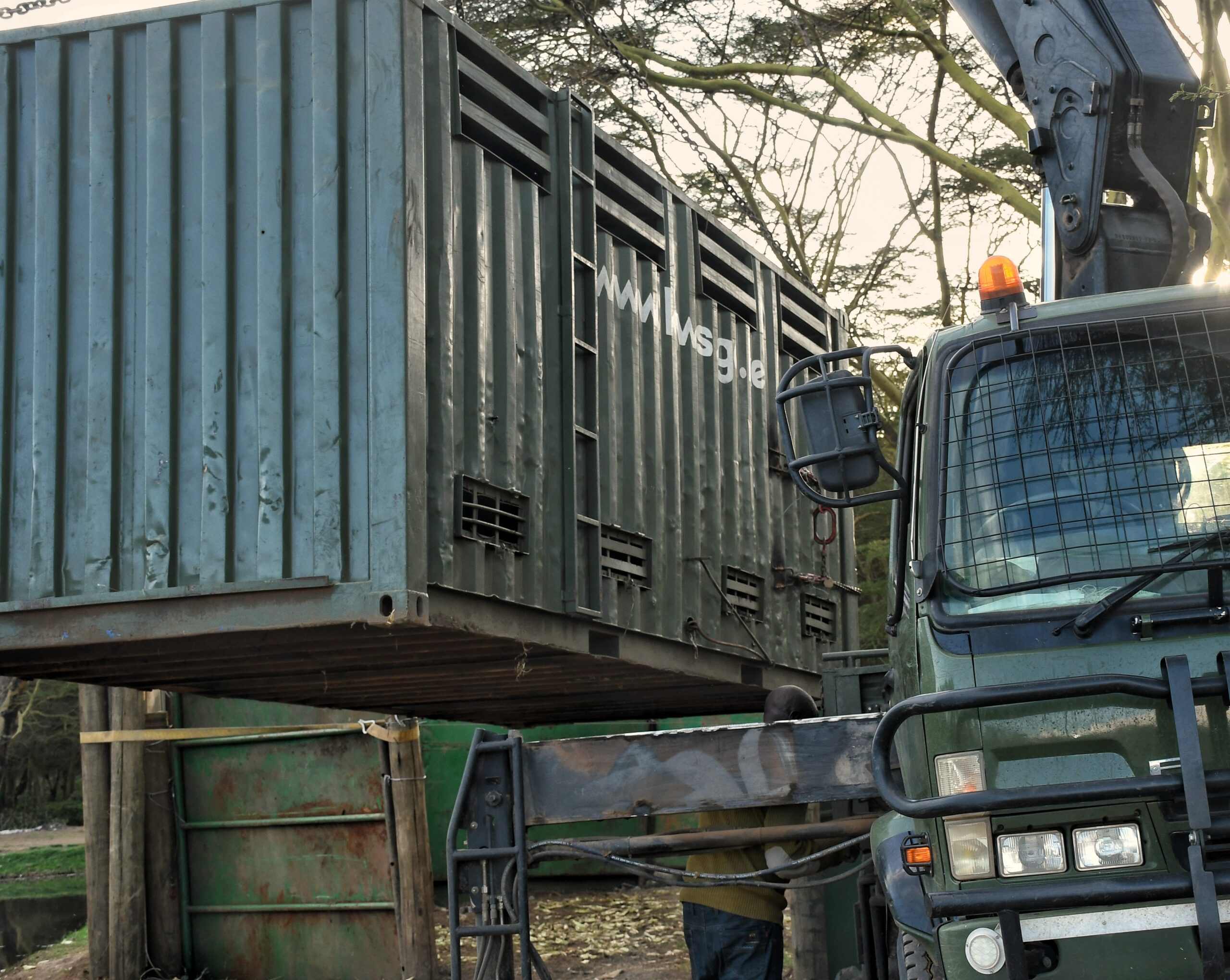Kenya Wildlife Service (KWS) has relocated a family of six hippos that has been terrorizing employees of the Naivasha Water and Sewerage Company (NAIVAWASCO) at the sewage treatment plant in Naivasha, killing one of them.
Speaking during the relocation exercise in Naivasha, Assistant Director of Veterinary Services at Kenya Wildlife Services (KWS), Dr. Dominic Mijele, said the relocation was prompted by complaints from the NAIVAWASCO employees who have been threatened by the hippos which killed one of the employees late last month as he went about his business at the treatment plant.
Francis Wachira, 45 was working at the treatment plant late last month when a hippo suddenly appeared and attacked him, seriously injured him, and threw him in a sewer pond, he was rescued and was rushed to Kijabe Hospital where he succumbed to injuries.
It also emerged that a primary school pupil is nursing serious injuries in hospital after he was attacked by hippos in the same area a couple of days ago. Indeed, several people, mostly fishermen have been reported having been attacked on the lake by the marauding hippos.
The family of the hippos has escaped from the nearby Lake Naivasha and camped at a sewage pond at the treatment plant where they had made it difficult for the NAIVAWASCO staffers to work.
The animals are being relocated to Laikipia Conservancy after 10 days of laying the traps and then sedating the animals before loading them into containers on trucks.
Dr. Mijele said they had also constructed moats (Depressions) around the treatment plant to prevent hippos that escape from the lake from invading the treatment plant again but noted this was a stop-gap measure and recommended that the County construct a proper fence around the plant since the moats can get filled up during the rain, providing an opportunity for the rogue animals to invade the plant again.
Lakeview Ward Member of the County Assembly (MCA) Alex Mbugua who was present during the relocation of the hippos welcomed the move and urged KWS to be proactive instead of being reactive when incidences of attack happen.
“The hippos have been at this treatment plant since 2020 and reproduced and increased in number, making them become aggressive in order to protect the young ones, but KWS did nothing,” he said adding that the County government had already committed to erect a fence at the sewer treatment facility.
Human-wildlife conflicts are becoming more frequent, serious, and widespread because of human population growth, agricultural expansion, infrastructure development, climate change, and other drivers of habitat loss.
To deal with this challenge, Dr. Mijele is advising people living around the wildlife-infested areas to come together and donate their land to build conservancies so that they can reap maximum benefit from the animals.
Parts of the country have experienced four consecutive seasons with inadequate rain in the past two years, which severely affected people and animals, including livestock, thus increasing the human-wildlife conflict. The worst-affected ecosystems are home to some of Kenya’s most-visited national parks, reserves and conservancies, including the Amboseli, Tsavo, and Laikipia – Samburu areas.
The Kenya Wildlife Service (KWS) in November last year reported that it had lost 205 jumbos, 512 wildebeests, 381 common zebras, 51 buffalos, 49 Gravy’s zebras and 12 giraffes in the past nine months to the ravaging drought.
The Government in September last year announced that it was set to release Ksh 2.6 billion as compensation for victims of human-wildlife conflict in the country and in July this year, has launched payment of Ksh 908 million as compensation to family members killed, injured and their property destroyed by wildlife across the country.
Elephants, lions, buffalos, leopards, cheaters, hyenas, snakes, and hippos are among the wild animals responsible for the attack.





